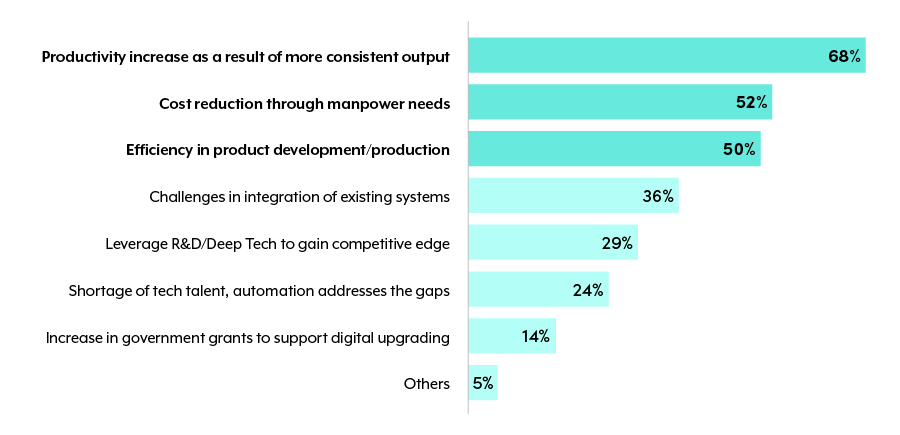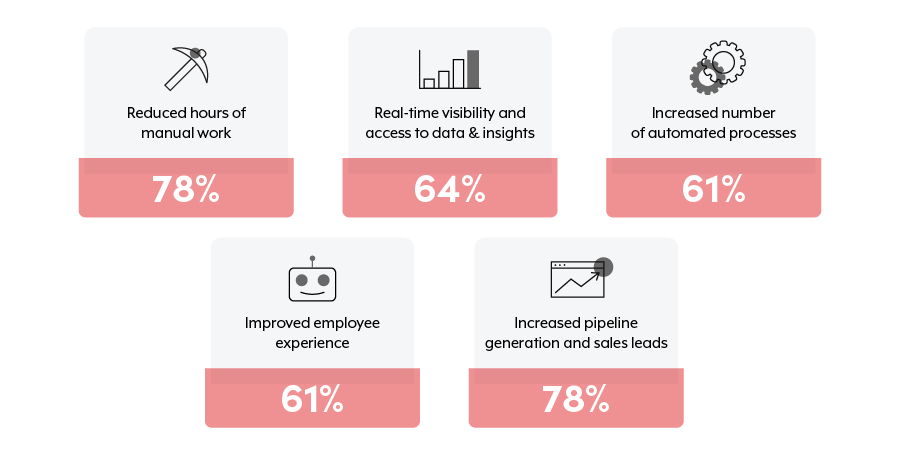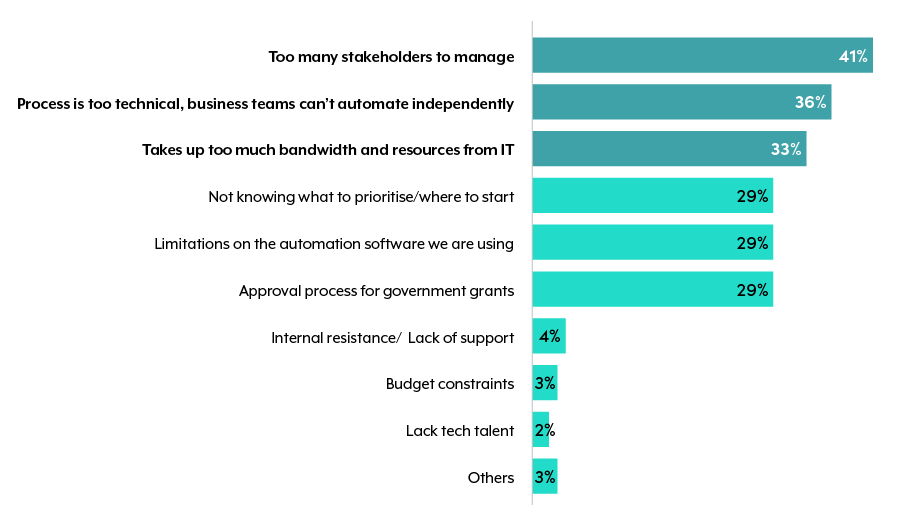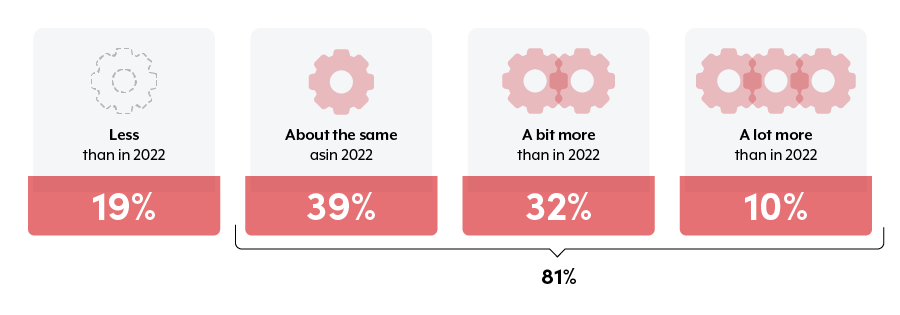Organizations across Singapore are jumping on the automation bandwagon. In fact, in 2021, Deloitte ranked Singapore 2nd in automation preparedness among APAC economies.
We wanted to dive deeper into why Singapore-based organizations are automating, what success looks like for them, and the roadblocks they’re facing, so we decided to partner with SGTech, a non-profit trade association that represents over 1,000 companies in the innovation space. Together, we surveyed 133 businesses in Singapore to get a comprehensive picture of the state of automation in the country.
Here are five key insights from the report:
1. Ignoring automation may erode your competitive advantage
We found that 83% of all organizations in Singapore have implemented at least one automation solution. Their top motivations for doing so include driving productivity, efficiency, and cost savings.
The potential gains from automation have spurred widespread adoption, with the majority of enterprises in Singapore already in the implementation phase. For businesses that haven’t automated yet, 8 in 10 intend to start in 2023.
As automation adoption continues to accelerate, companies in the lead will continue to rack up efficiency gains, acquire greater data visibility, and accelerate innovation; meanwhile, those lagging on the automation curve will inevitably get left behind.
2. Automation delivers business KPIs faster
An overwhelming majority of respondents report seeing stellar results in a short time frame. 98% said automation has delivered a positive impact, and 82% report seeing tangible results in less than six months. In fact, 21% of this group saw results in one to four weeks.
Speed, scale, and access to data are key factors for success in a competitive business landscape—and the automation frontrunners are already reaping these benefits. Businesses cite reduced hours of manual work, real-time visibility of data, and an improved employee experience as some of their key automation wins.
3. Budget constraints and a lack of automation skills impede progress
Even though the majority of respondents (63%) have made good progress, their automation journey has come with challenges. The top frustrations cited include stakeholder management (41%), overly-technical processes (36%), and an overdependence on IT (33%).
These findings highlight the importance of choosing the right automation partner and platform. More specifically, organizations should look for a vendor that offers comprehensive product education, a fair pricing model, and a change management program that’s designed to maximize business user adoption. In addition, organizations should look at vendors that offer a modular approach to implementation, as that makes it easier to plan IT spend and enable quick upgrades as requirements change over time.
4. It takes a village to automate
IT departments still own most automation initiatives (54%), with only 38% of our respondents citing cross-departmental collaboration as part of their approach to planning and building automations. However, companies with the most successful automation outcomes involve all departments when building a holistic automation roadmap.
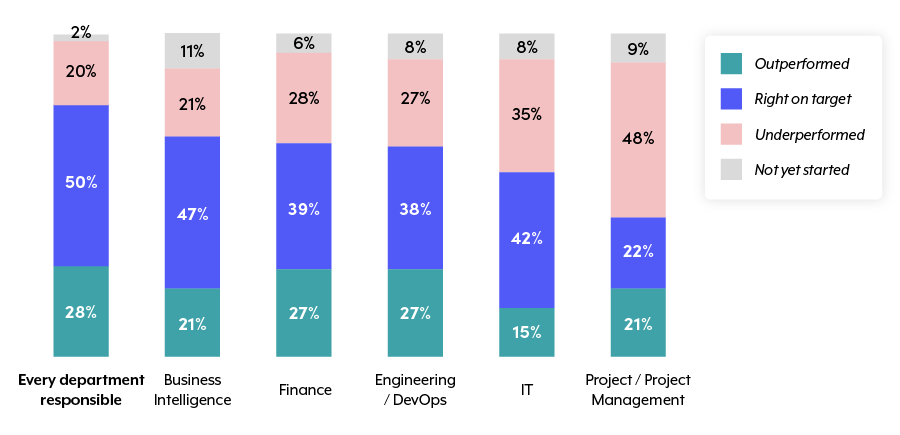
The likelihood of achieving automation targets is much higher (78%) when every department is an active part of the implementation process, as opposed to when IT is the only department that’s responsible (67%).
Given these findings, company leaders that want to roll out a sustainable and effective automation plan should adopt a multi-stakeholder approach that empowers non-technical business users to automate with ease and confidence.
5. Enterprise-wide automation adoption will continue to accelerate
In spite of an economic downturn, 8 in 10 enterprises intend to automate as many processes in 2023 as they did in 2022, if not more. Even among enterprises that haven’t jumped on the bandwagon yet, 41% intend to launch automation initiatives over the next 12 months.
As business users get more comfortable with automation, we expect to see an uptick in enterprise-wide automation adoption—and our findings validate this idea. 60% of enterprises intend to roll out company-wide automation systems, as opposed to point solutions (31%) or departmental automations (33%).

